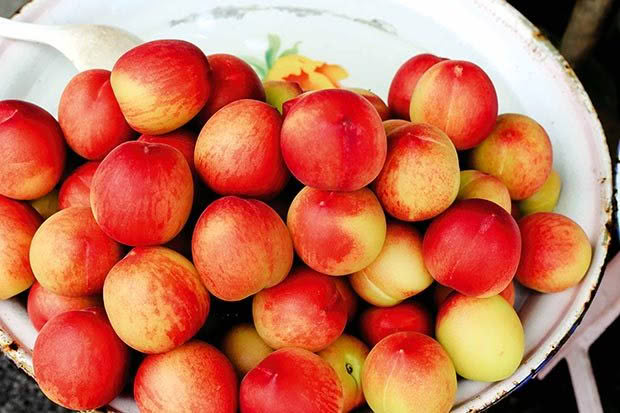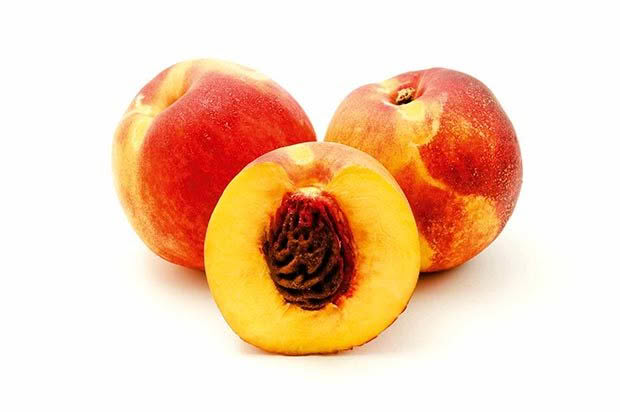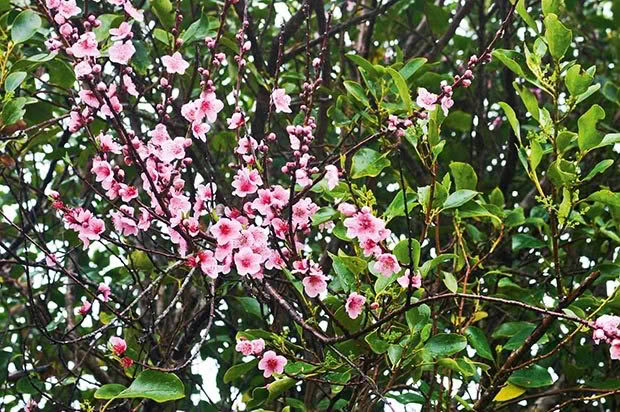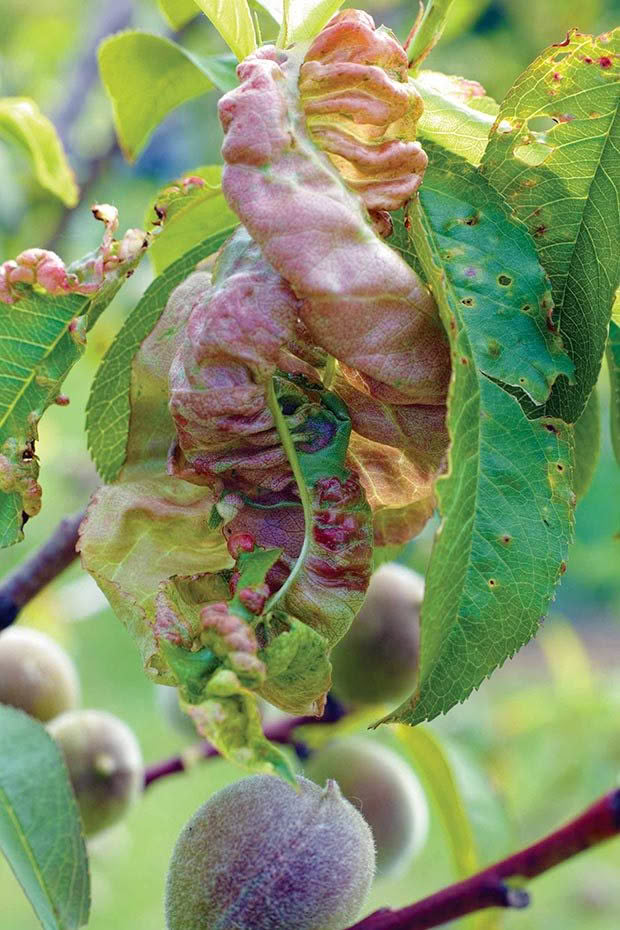Treating curly leaf in fruit trees

Peacherines and nectarines are peach-plum crosses, but there’s some debate as to whether they are the same thing.
Words: Ben Gaia
NECTARINES
How to ID: peach-shaped but have no fuzz
Everything I learned about growing nectarines I learned from Dinny Murphy. He used to grow them on the back of the sawmill processing plant wall, opposite the smoko room. The boys would get a good feed off them some years and have a nectarine for smoko. There was a grapevine trained along the wall too, out of the wind. Our own trials in an open, wet and windy paddock found that nectarines dried up and died of leaf curl. Then we tried Dinny’s trick and grew one up against the inland side of a tunnel house wall.

Now we have West Coast nectarines too, so it can be done. You need to choose a sheltered wall of a house, right out of any sea wind where they will get some sun so the fruit can ripen. That said, they are worth growing for the blossom alone. In Europe, they grow well inland from the Mediterranean, between vineyards in southern France and northern Italy. There is nothing as refreshing as a huge red nectarine from a French market, rediscovered in a bag after a long parched train ride, eaten with dripping fingers as you pass the rows of orchards near Nimes. Anyone with sheltered areas (frost protection) and mild springs should excel in growing any kind of peach-plum cross, yet another bonus of the lucky niche climate we have in Aotearoa.
There are a lot of varied and old types of peach crosses to be found around the Northland region, where peach growing to supply the growing city of Auckland was one of the first sizeable orchard ventures in New Zealand. The Koanga Institute has a collection of old varieties if you check out their website (www.koanga.org.nz): click on Resources & Research – Fruit Trees – Fruit Tree Collection – Almonds, Nectarines, Peacherines and Apricots.
PEACHERINES
How to ID: look like peaches but are larger, juicier and sweeter

You can peel the fuzzy skin off a peacherine if your digestive tract doesn’t cope with tough skins. The fruit is juicier than a peach, more like a large plum. Please excuse me as I pause to wipe drool from my face. They are on the big side for a peach, orange fleshed, juicy and sweet. They are a peach-plum cross, crossed again with a peach.
Then again, maybe it’s a marketing ploy like the similar term ‘nectarine’.

Peach blossoms in spring.
They were created to sell into the new markets in the USA in the early 1900s with the invention of refrigerated rail cars so technically peacherines are basically another type of nectarine. In a permaculture orchard these trees work well with poultry, benefiting from the extra manure and bug control, but you need to beat the hens to the fruit before it falls. Too much rain at harvest brings on brown rot, but often half the fruit is fine so use the good halves for chutney and jam. Peacherines can be substituted for tomatoes in chutney recipes, and make jam similar to apricot jam. I see no downside to a peacherine.
5 OPTIONS FOR DEALING TO CURLY LEAF

Both types of tree get hopeless cases of curly leaf, mostly during spring.
1. I say don’t worry about it. So what? It makes the tree look less attractive, but they usually fruit just the same.
2. You can spray all the copper you like but I reckon there’s enough in my water supply already without adding more.
3. Pick off the curly leaves or any messy brown bud areas obstructing young fruit.
4. A mid-spring prune of affected twigs and dried-out stems is good. Burn the cut off bits if you can, to reduce sources of further infection.
5. Shelter from stressful spring winds is essential. Nectarines definitely need to be pampered.
About the author
Ben Gaia grows trees in the extreme climate of the West Coast of the South Island and runs a mail order nursery for organic fruit and forestry trees, www.dialatree.co.nz
Love this story? Subscribe now!
 This article first appeared in NZ Lifestyle Block Magazine.
This article first appeared in NZ Lifestyle Block Magazine.
